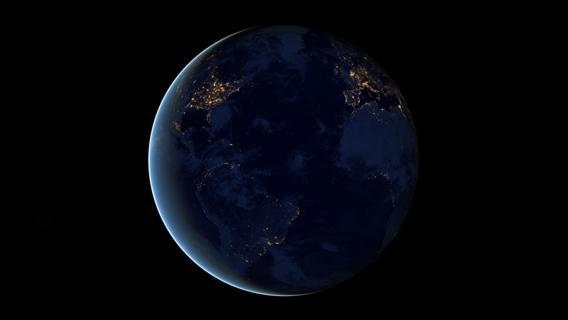Suomi NPP is an Earth-observing satellite equipped with a camera that can see from the visible light spectrum out into the infrared. Far more sensitive than its predecessors, this camera can spot fires, the aurora, city lights, and even moonlit clouds at night. Twenty-two days of data from April and October 2012 were used to create this animation of Earth, showing a stunning and eerie view of our planet spinning in the dark of night:
[Make sure you set it to high definition and make it full screen.]
Images of city lights from Suomi NPP were mapped onto pre-existing data from the Blue Marble project to make realistic full-disk images of the Earth. It’s amazing what you can pick out; my favorites are the Nile River, Hawaii all by its lonesome in the Pacific, and of course my hometown of Boulder (and Denver). It always amazes me how city lights in the United States just suddenly stop west of the central time zone. But when I look up at night and see my dark skies, I’m thankful for it.
The data from Suomi NPP is very useful. For one thing, city lights map the spread of humanity, so over time we can measure how urban sprawl evolves. It’s also useful to keep an eye out at night on wildfires, weather (if the Moon is out to illuminate it), and other low-light phenomena. [Update (Dec. 7, 2012): A lot of people in the comments, on Twitter, and on Facebook were asking about the lights in western Australia, where city lights are rare. I said they were fires, and now a post by NASA confirms I was right.]
I’ll note Suomi NPP orbits about 800 kilometers (500 miles) above the Earth and sees only a small part of the planet at any one time. This animation comprises 2.5 terabytes of data—2500 gigabytes!—that were stitched together to show the entire Earth’s face over a single rotation. That’s an amazing job, but the end product is a seamless and dramatic view of home, turning as it has for billions of years and will continue to for eons to come.
